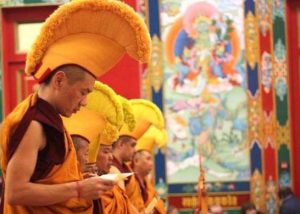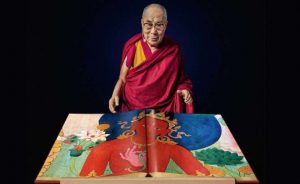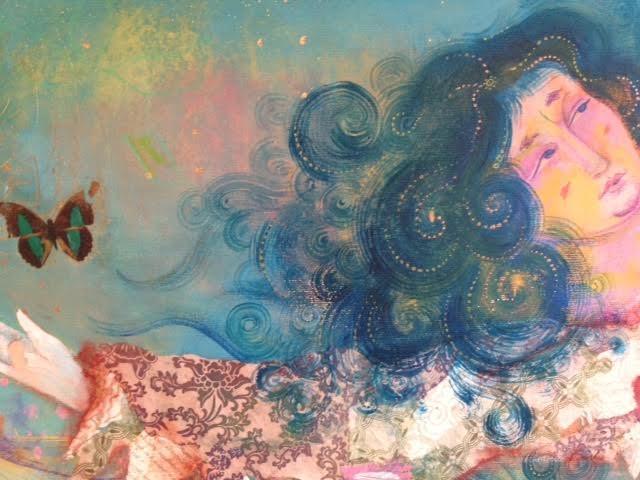
Art for art’s sake has never been an overriding motivation in Tibetan culture or Tibetan Buddhism. For example, we can understand thangka painting, the sacred art of depicting icons, as a meditational tool. This article will explore these two diverging viewpoints: art made with the objective of serving the spirit and art made spontaneously as its expression.
Let us begin by examining our understanding of the concept of an image. An image can be perceived in many ways. First is the physical way, in which we recognize images of the manifest world through our eyes. But there are also images that we recognize without relying on our physical senses: those that appear in a dream, emerging from the subconscious mind; memories; hallucinations; or simply those we conjure up. This imaginary world is constantly present and plays a significant role in our lives, both while we are asleep and during our waking hours.
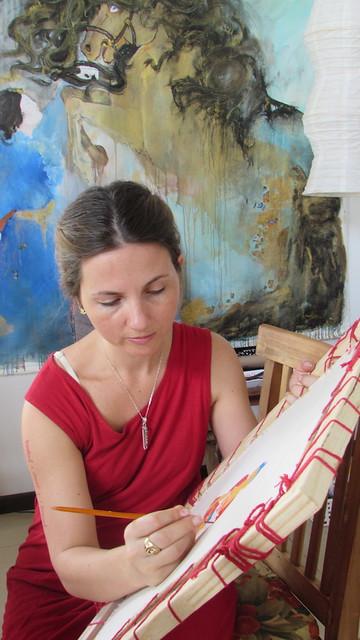
The artist works within this infinite repertoire of possibilities. Each image has a meaning and each meaning can be universal or it can be intimately personal. In the same way that one uses imagery to influence people to buy a product through a TV commercial, one can also use the power of imagery to awaken and enlighten.
Images can provoke horror or they can inspire pleasure or divine experiences, so the artist who works with the imaginary holds quite some responsibility. In most cases, artists express their vision of what they see and sense, materializing their own internal world; however, artists can also learn from the obverse approach—using outer images to influence their inner world. By depicting images of enlightenment, the artist might reach the state of being that the image represents. In Tibetan sacred art, the artist does not focus on his or her own vision of the world, but is trained to repeat the same divine image over and over again, allowing each repetition to permeate a deeper layer of consciousness and shape it with the motivation of a bodhisattva—someone who, motivated by compassion, has generated bodhichitta, the wish to attain buddhahood for the benefit of all sentient beings. In surrendering to the process, sacred artists are influenced, transformed, and shaped, to finally merge with what they are representing: the Buddha mind.

In conceptual art, in which the artist is the source of the image or the inspiration behind a piece of art, consciousness and expression emerge simultaneously with the experience of producing, presenting, and observing. A path to experiencing Buddha mind is also possible through this type of artistic creation, likewise through a kind of training that continuously guides one’s eye and motivation.
For example, let us say that the artist has a vision of goodness, expressed in the form of a small white feather placed in a completely empty room. The observer can enter the room and simply not connect with or understand the expression. But when one opens one’s mind to the experience, that subtle, minimalistic manifestation of “goodness” suddenly generates a great deal of mental space, merging the observer’s understanding of goodness with that of the artist. It is a glimpse of the sense of “goodness” (although it could also be much more subjective than that), which also allows for a very broad and liberal interpretation.
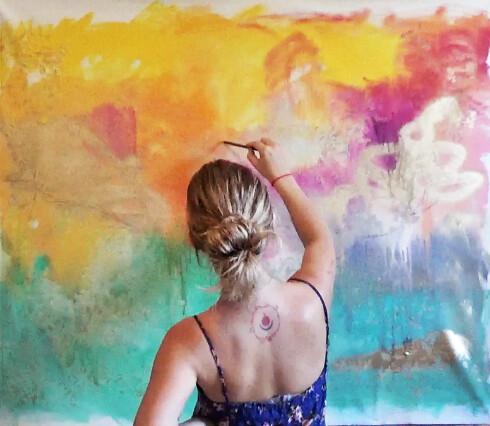
In the Heart Sutra, the Buddha teaches that “Form is emptiness; emptiness is form.” By observing all forms, images, and phenomena without judgment, one can realize the experience of emptiness. Ultimately, all things are covered with the same fabric; they simply assume different shapes, changing all the time. When we look at a work of art, we might see the majestic David by Michelangelo, for instance, or merely a piece of rock—both are true, both have significance, but only in our mind. Our experiences lead us to apprehend and believe in a certain way. So, if we wish, we can train our eye and motivation to perceive everything as sacred, and consequently enjoy a sacred and joyful life—simply by training the eye!
Art teaches us a great deal about perspective. How can one person view a picture and be moved by its meaning while someone else sees only a blur of color? The picture is the same, but the perspective and the apparent individualism are different. The picture is a wonderful experience for the person who sees it as art and a joke for the one who sees a blur. In the end, is the picture wonderful or is it a joke? It is neither. In fact, it is what you want to it be, or even a mirror of who you really are. If you see beauty it is because you allow beauty to exist within your being.

The path of an artist is an eloquent way to touch that fabric, to experiment, to play, to create, to see its impermanent cycles, and to be detached from a fixed significance—including that of our own identity. This type of training can offer a form of Buddhist insight through an experience of the art, offering the artist and the viewer a path to enlightenment. One can experience this through traditional training without the creative element but instead with discipline and obedience, or one can find it within the creation of uninhibited, conceptual art. One can even follow both paths at the same time, using both traditional and contemporary art as one’s two “legs” on the journey to enlightenment and thus walking the path of the artist-pilgrim.
Tiffani Gyatso is a traditional Buddhist thangka painter and a member of the Dakini As Art Collective. To learn more about Tiffani, her work, and Dakini As Art, please visit Dakini As Art.
See more










